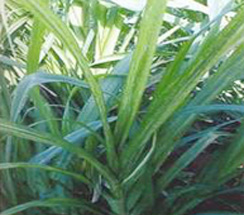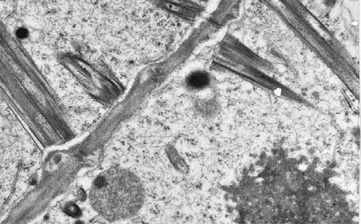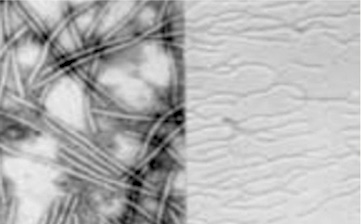Agricultural crops :: Cereals ::Ragi diseases
| Mosaic: Potyvirus |
Symptom:
- Infection may occur at all stages of plant growth but the symptoms become most prominent from 4 to 6 weeks after planting.
- The first symptom is chlorosis, followed by mosaic mottling and severe stunting of the plant.
- The entire plant becomes pale, dwarfed and sterile.
- Rarely the affected plants come to ear and if formed the panicle is mostly chaffy.
- Closer examination of the plant may reveal such symptoms as characteristic dark brown lesions on the basal stem as found in Helminthosporium rots, secondary root formation from the nodes much above ground level, and fungal masses in the split open culm.
- As the disease advances, the plants wither prematurely and the diseased crop is easily identified from a distance.
- The loss in grain yield may be as high as 100 per cent, depending upon the age of the plant at the time of infection.
- A dry summer and bad drought conditions preceding the irrigated crop are believed to favor the disease.
|
| |
 |
|
 |
|
 |
|
| |
SMALL SPECS ON FUNNEL LEAF |
|
MOTTLING ON CENTRAL LEAF |
|
CHLOROTIC STREAK ALONG VEIN |
|
|
Identification of pathogen:
- Some strains of the sugarcane mosaic virus and maize dwarf mosaic virus cause the ragi mosaic disease.
- Virions consist of a capsid. Virus capsid is not enveloped. Capsid/nucleocapsid is elongated with helical symmetry. The capsid is filamentous, flexuous with a clear modal length with a length of 730-755 nm and a width of 13 nm. Axial canal is indistinct. Basic helix is obscure.
Management:
Cultural method |
| |
 |
|
 |
| |
Potyvirus causing inclusion bodies |
|
Microscopic view |
|
- Rogue out the affected plants
- Crop Rotation
- The disease intensity can be reduced with heavy doses of phosphatic fertilizers combined with fortnightly sprays with a combination of fungicide and insecticide
Chemical method
- Spray Methyl dematon 25 EC 500 ml/ha on noticing symptoms and repeat twice if necessary at 20 days intervals for control of insect vectors
|
Source of microscopic image (left): Plant Pathology by George N.Agrios
Content Validator: Dr. T.Raguchandar, Professor (Plant Pathology), TNAU, Coimbatore-641003
|
|





